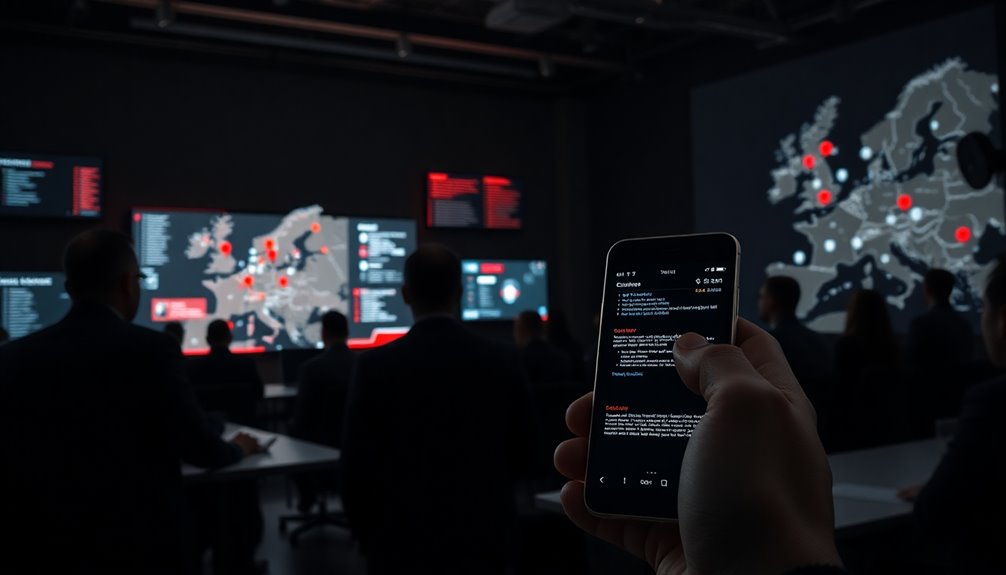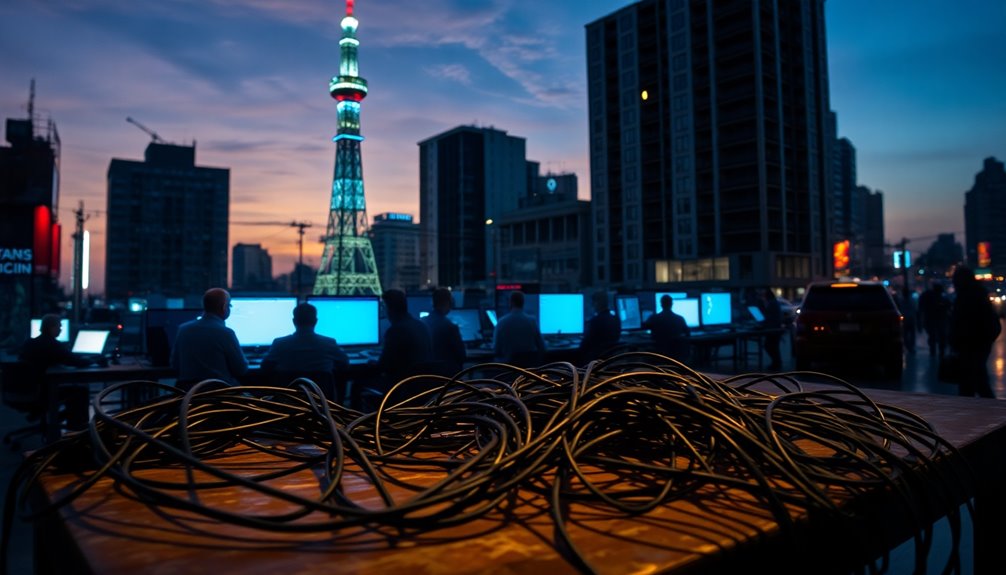
As the telecom sector faces an escalating array of cybersecurity threats, it’s crucial for operators to remain vigilant. The risks are significant, particularly with foreign state-backed hackers from countries like China, Russia, and Iran actively targeting the telecom industry. These threats include repeated cyber espionage attempts that have already compromised several U.S. telecom companies, highlighting the urgent need for robust cybersecurity measures.
The telecom sector faces heightened cybersecurity threats, necessitating vigilance against state-backed hackers targeting critical infrastructure.
You might be aware that Denmark has raised its cyber threat level for the telecom sector from medium to high, reflecting a broader trend of increasing vulnerabilities in the industry. In response, regulatory actions by the FCC have mandated telecom operators to secure their networks against cyberattacks. This means you, as an operator, must take these obligations seriously and implement comprehensive cybersecurity and supply chain risk management plans.
Annual certifications are now required to confirm that you’ve effectively implemented these plans. This process not only ensures compliance but also fortifies your defenses against state-sponsored cyberattacks. Protecting your digital infrastructure is critical, as it plays a central role in both professional and private contexts. The stakes are high; failing to secure your networks could lead to severe consequences not just for your company, but also for the public.
The telecom industry is especially vulnerable to distributed denial of service (DDoS) attacks, which account for 57% of such incidents across various sectors. Cyber threats are a global concern, and countries around the world face similar risks from state-backed hackers. As nations increasingly adopt hybrid warfare tactics, cyberattacks become a tool for espionage and disruption. Therefore, regular threat assessments are crucial for identifying and mitigating emerging risks.
Staying ahead of these threats means understanding the regulatory environment. The FCC has clarified your legal obligations, and proposed rulemaking aims to enhance cybersecurity measures across communications service providers. You’ll also need to focus on executive accountability through your annual certifications. However, keep in mind that regulatory uncertainty might loom under new leadership, making it essential to stay informed.
Moreover, be aware of the technological challenges that come with integrating AI in your services and managing legacy IT systems. These factors can hinder your innovation and pose obstacles for effective cybersecurity. By establishing effective KPIs, you can assess the success of your technology transformation programs, ensuring that your defenses evolve alongside the threats you face. In this high-stakes environment, proactive measures can make all the difference.









